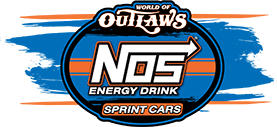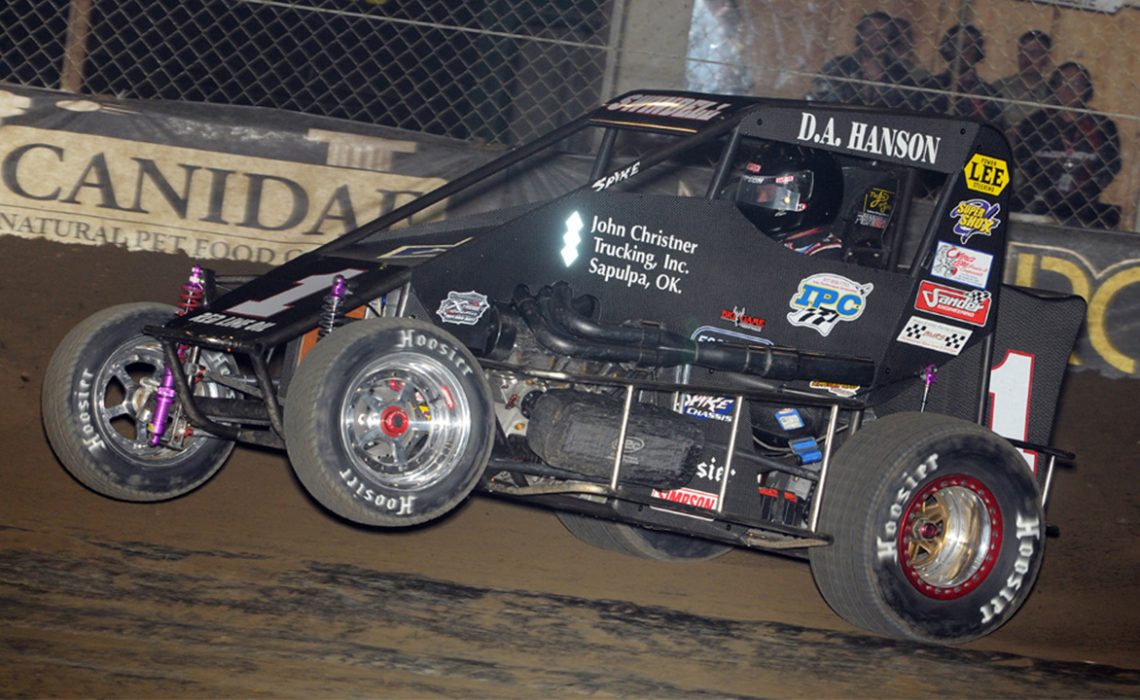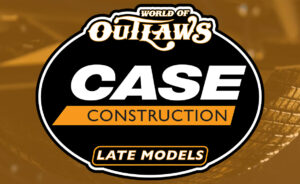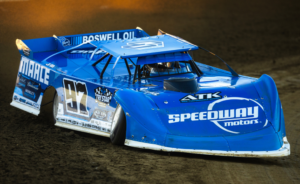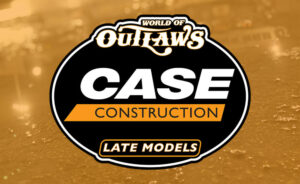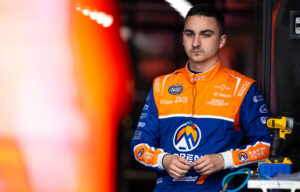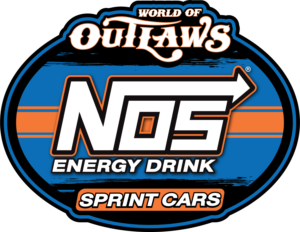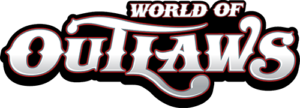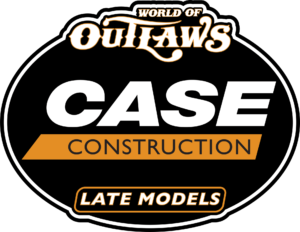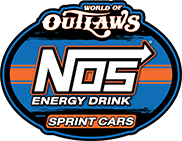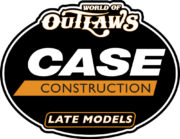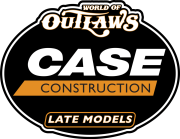Outlaws built the Chili Bowl. Sure it was Emmett Hahn’s brilliant idea to create the world’s greatest indoor track but he required Outlaws to fill his hometown oil expo.
Hahn had no business with Sammy Swindell or Doug Wolfgang prior to the first Chili Bowl Midget Nationals but Lanny Edwards did. Lanny and Beverly Edwards had been luring Sammy to their Devil’s Bowl longer than the World of Outlaws had owned a mailbox. They partnered with Emmett and his wife “Fuzzy” for the first Tulsa (600cc) Shootout in 1986 and subsequent Chili Bowl in ‘87. Auto racing had never seen such a phenomenon. Shootout exceeded 1,000 cars and Chili Bowl topped 300. International icons scheduled Oklahoma between New Zealand and Australia.
All things considered, it should be easier to provide two grooves to a dirt track immune to sun or wind or eight-cylinder torque. As entry lists ballooned, Emmett and Edwards (he passed in 2016) lost all wiggle room regarding city curfew and wholesale grooming. Hahn streamlined to spot which lane was losing speed, as he did as Supermodified champ, then gave the opposite lane a quick scratch to restore parity. Later when Tony Stewart halted midget races, Hahn handed surface maintenance to him.
Prior to the Chili Bowl’s wheel-to-wheel mayhem, indoor auto races generated very little respect because few offered any ability to do more than root and gouge. Hockey rink parades stretched from San Francisco’s Cow Palace to Long Island’s Nassau Coliseum. Beating and banging around flat concrete was rarely worth the fumes to fans or competitors.
The Outlaws are invading Chili Bowl! 😎🌶
Tonight is the first of six straight days of racing in Tulsa and we’ve got Outlaws of all variety competing for the Golden Driller.@DavidGravel, a 58-time winner, races in the first preliminary program tonight. pic.twitter.com/qUaQ81mlre
— World of Outlaws (@WorldofOutlaws) January 11, 2021
Football fields offered more speed. The Houston Astrodome erected a dirt track that attracted Indy 500 heroes in 1969. The biggest race in the Seattle Kingdome came in 1977 when Wichita’s Jerry Stone stunned USAC some 15 years before surprising the Outlaws at Tulsa Speedway. December 1980 brought dirt to the Pontiac Silverdome when Outlaws included Wolfgang, Steve Kinser, Rick Ferkel and two Swindells. All were dusted by Kansas City’s Gene Gennetten, sixth at Sedalia during the ‘78 Outlaw season and winner of the first midget race in the expo at Tulsa. The Hoosier Dome Midget Invitational was more downtown social event than honest racing, though Rich Vogler and Ken Schrader seemed to pass at will. Kinser got invited to the first Dome 100 in 1985 and joined Swindell and Wolfgang at the fourth Chili Bowl. Seattle nor Indy ever covered its concrete with clay.
Built in 1966, Tulsa’s International Petroleum Exposition building was utterly unique. It occupied 10 acres as the largest such structure with cables in place of pillars. As a racetrack, it instantly exceeded the wildest dream. Hahn knew what surface he wanted as promoter at the Port City Raceway (recently purchased by Kevin Rudeen and Shane Stewart) and Creek County 66 so Edwards dragged a tiller to Tulsa from Texas. “There’s a cushion!” was shouted over frozen phone lines.
No one could rip a lip better than Doug Wolfgang, wheelman for Chicago’s Ken Weiland at the first Chili Bowl then Larry Howard (‘90) and Jim Streicher in 1994. Ron Shuman was another rim rider in the first Chili Bowl for Jack Yeley after taking third in Outlaw points from the final season for Tulsa’s enormous Ofixco shop that backed Jerry Stone. Chili Bowl eluded Shuman despite second-places with SoCal’s Skip Schuck. Shu flew for John Lawson (‘97) and took a 2008 curtain call as teammate to son Casey. Steve Kinser crossed second for Fresno’s Terry Caves and third for Ralph Potter of Indy then joined Lawson (‘99) and Keith Kunz in ‘05-06. More often, Steve wintered in Australia or Arizona as in 1994 when airplanes and helicopters helped him to Tulsa from Canyon on the same Saturday.
Dave Blaney shocked the world by winning the 1993 Chili Bowl in his Midget debut. In hindsight, few should have been surprised. Blaney became a Sprint victor in his second season, USAC Silver Crown champion as class rookie, and nearly won the Syracuse Modified classic with no seat time. All five of his Chili Bowls came in cars of Ralph Potter and his many sons. Blaney achieved his Outlaw championship in 1995 on his way to NASCAR.
Blaney’s win was followed by the epic 1994 struggle won by fellow Outlaw traveler Andy Hillenburg. That feature was as good as anything outdoors by any class. The fact that Andy’s address was Broken Arrow raised the roof with thunderous applause. It would be 23 years until another Okie could win the Sooner State’s biggest plate of okra. Hillenburg did eight Chili Bowls for Rusty Kunz and Rusty’s kid brother. Third-place in 1994 Outlaw points was the best of Hillenburg’s career.
Racing alongside Gravel and making his Chili Bowl debut tonight is soon-to-be @JJR41Updates pilot, @Carson_Macedo!
The black & gold @Tarlton_Racing No. 21T never disappoints, be it Midgets or Sprints. 😍 pic.twitter.com/kbF4vyRmcb
— World of Outlaws (@WorldofOutlaws) January 11, 2021
Danny Lasoski from bordering Missouri was an Outlaw champ strong in 19 Chili Bowls. Danny “The Dude” drove for Tulsa’s Steve Enlow in 1990, Denver’s Joe Finley (‘91-92), Rusty Kunz, Potter, four years for Larry Howard, Kunz again, five years in Jerry Russell Eagles, then two and a half Bowls for Joe Loyet of St. Louis. Danny’s desire to bring racing to Kansas City’s Kemper Arena cost him that last Midget because Lasoski and Scott Pennington handed a rubber check to the winner who just happened to be Brad Loyet. Loyet informed Lasoski that if son’s money was not placed in father’s hand, Lasoski’s car was parked. “The Dude” never raced in the expo again.
One need not be a historian to know that Sammy Swindell and son Kevin Swindell turned the Chili Bowl into a personal playground. So dominant was the design of Sammy’s midget that it could only be beaten by the one driven by Kevin. Dad first teamed with Streicher then Indy’s Gary Runyon for the first of five Golden Drillers. He drove for Larry Howard (‘91-92) and Greg Wilke (‘93), then spent seven Chili Bowls with the incomparable Kunz brothers. Ever the tinkerer, Swindell eventually had to build two midgets that even Keith Kunz could not equal.
Those days seem distant. Blame old age (Sammy is 65) and the 2015 Knoxville Nationals disaster that dropped Kevin into a wheelchair. Kunz kept adding cars and contenders until Rico Abreu and Christopher Bell had stacked five straight Drillers.
The biggest winner of the fractured 2020 World of Outlaws campaign was Kyle Larson after he made Chili Bowl the first feather of a 45-win season. Outlaw winners Bell, Abreu, Swindell, Shane Golobic and Aaron Reutzel comprised one-quarter of last year’s final field because Oklahoma heroes have always been Outlaws.
This year, you’ll notice familiar Outlaw names such as Brad Sweet (two-time defending World of Outlaws champion), David Gravel (2019 Knoxville Nationals champion), Carson Macedo (2019 World of Outlaws Rookie of the Year), Daryn Pittman (2013 World of Outlaws champion) and Mike Hess (World of Outlaws Sprint Car Race Director).
Out with the headset — In with the steering wheel.
World of Outlaws Race Director @MHess51 straps in and runs his preliminary show tonight at the @CBNationals! pic.twitter.com/jXgMaPBzyD
— World of Outlaws (@WorldofOutlaws) January 12, 2021
